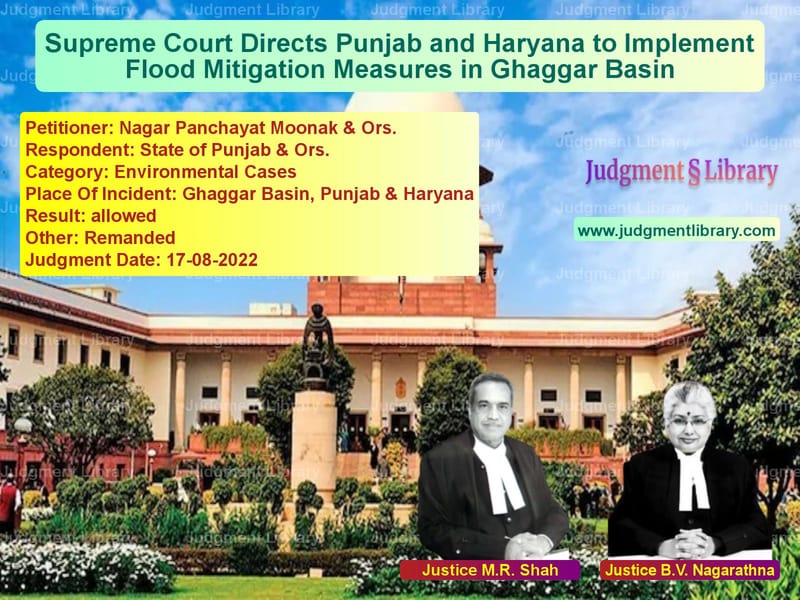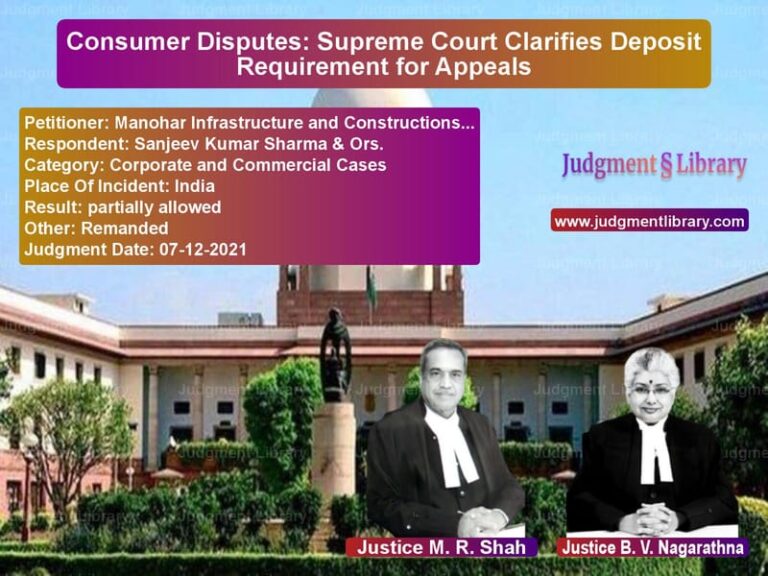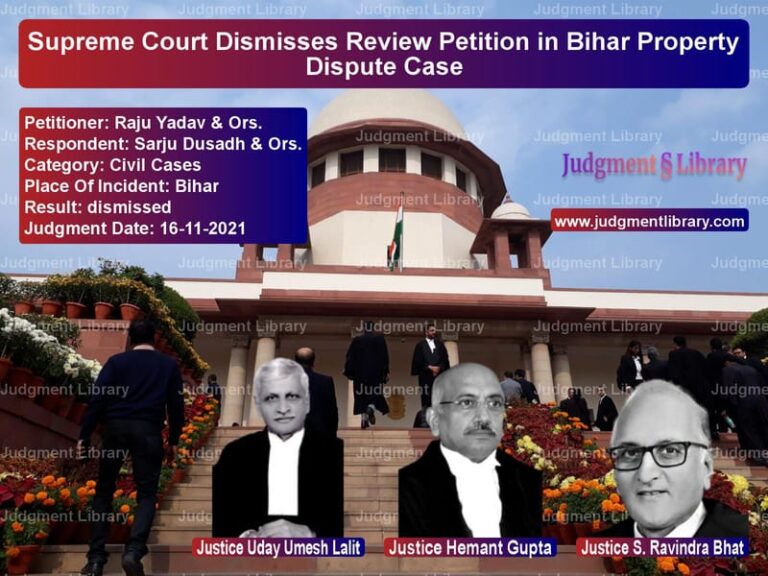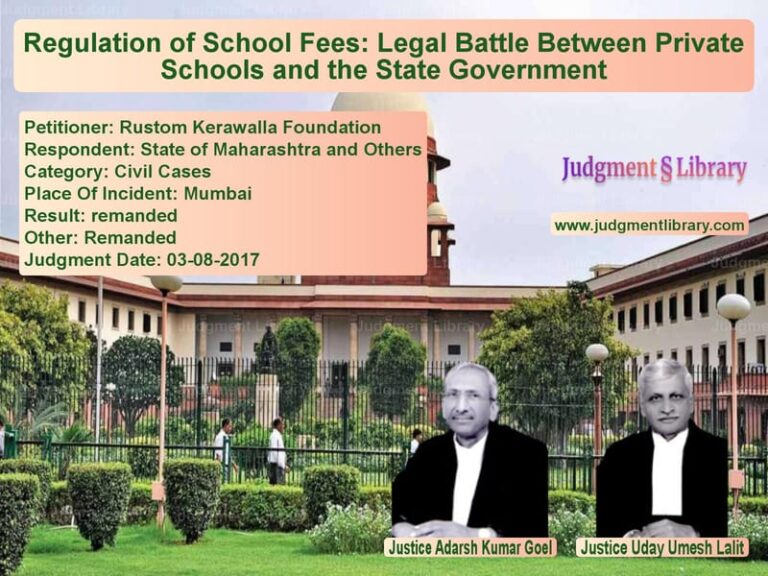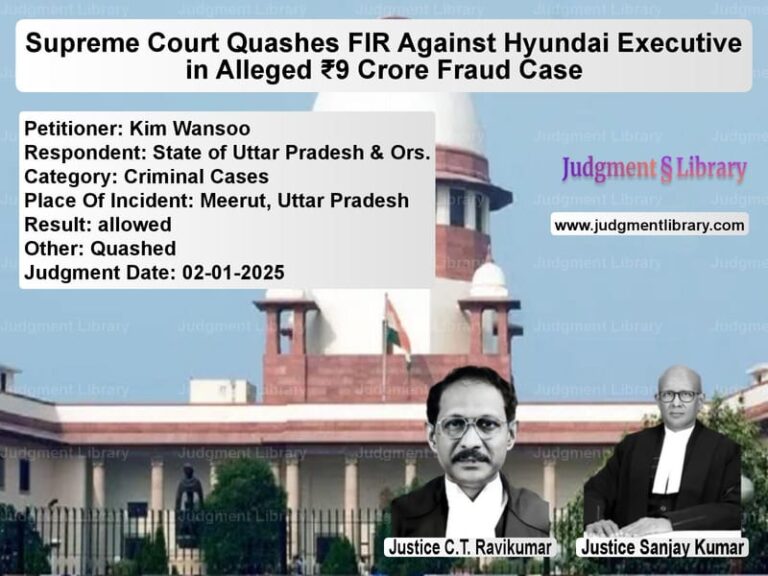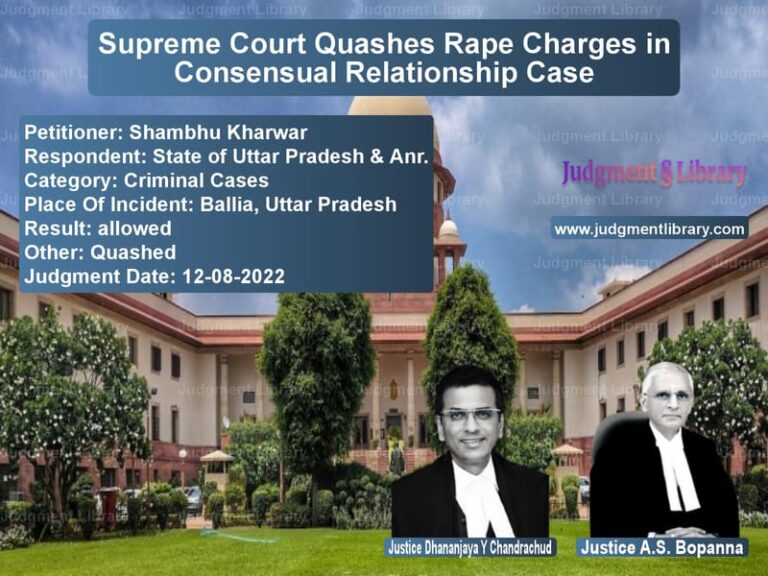Supreme Court Directs Punjab and Haryana to Implement Flood Mitigation Measures in Ghaggar Basin
The Supreme Court of India recently ruled on a significant environmental dispute concerning the recurring problem of flooding in the Ghaggar Basin, affecting over 25 villages in Punjab and Haryana. The case was brought before the Court by the Nagar Panchayat Moonak and others, who sought judicial intervention to ensure that the state governments take necessary flood mitigation measures as recommended by the Central Water and Power Research Station (CWPRS), Pune.
Background of the Case
The Ghaggar River, which flows through Punjab and Haryana, has been a perennial source of flooding, causing damage to agricultural land, homes, and infrastructure. Due to inadequate drainage and encroachments along its banks, the river often overflows during the monsoon season, submerging villages and disrupting livelihoods. Despite repeated concerns raised by affected villagers and local bodies, no substantial action had been taken by the state governments to address this issue.
Read also: https://judgmentlibrary.com/supreme-court-quashes-closure-order-for-gujarat-cold-rolling-steel-unit/
In response to the petition filed by the Nagar Panchayat Moonak, the Supreme Court issued an order on March 11, 2019, directing the Chairman of the Central Water Commission (CWC) to conduct a meeting with officials from Punjab and Haryana to find a long-term solution to the problem. Following this directive, a meeting was conducted by the Ghaggar Standing Committee on March 1, 2019, where it was decided that a Mathematical Model Study (MMS) should be carried out by CWPRS, Pune, to evaluate and recommend flood mitigation measures.
Findings of the Mathematical Model Study
After extensive research and consultations with state government officials, the CWPRS, Pune, submitted its preliminary report on October 9, 2020. The findings were discussed in the 30th Ghaggar Standing Committee meeting on December 18, 2020, followed by multiple review meetings in 2021.
The study recommended several key measures to mitigate flooding in the Ghaggar Basin:
- Widening of the Ghaggar River: The river’s width should be increased from 60 meters to 90 meters at specific locations to ensure smooth passage of floodwaters.
- Construction of Embankments: To prevent water from spilling over into adjacent villages, embankments should be constructed along both banks of the river, with a height sufficient to limit water level rise to 2 meters.
- Strengthening of Drainage Channels: Several existing drainage channels need to be reinforced and expanded to facilitate quicker discharge of excess water.
- Short-Term Flood Control Measures: Temporary flood barriers and additional drainage outlets should be installed before the next monsoon season.
- Long-Term Structural Modifications: Over a period of five years, structural improvements such as spillways, check dams, and retention basins should be developed to regulate water flow effectively.
Arguments Before the Supreme Court
Petitioner’s Arguments (Nagar Panchayat Moonak & Ors.)
- The petitioners argued that despite repeated complaints and scientific studies confirming the severity of the problem, the state governments had failed to take necessary action.
- They emphasized that flooding in the Ghaggar Basin was not a natural calamity but a result of governmental negligence and poor planning.
- The petitioners requested the Court to issue mandatory directives compelling the states to implement the CWPRS recommendations within a fixed timeframe.
Respondent’s Arguments (State of Punjab & State of Haryana)
- The state governments contended that flood mitigation efforts had been initiated but were delayed due to financial constraints and coordination issues between various agencies.
- They submitted that additional technical evaluations were required before full-scale implementation of the CWPRS recommendations.
- The states also assured the Court that they were committed to resolving the issue and would act upon the expert recommendations in a phased manner.
Supreme Court’s Observations
The Supreme Court took serious note of the prolonged inaction by the state governments and observed:
“The problem of overflooding in the Ghaggar Basin has remained unresolved for years, causing immense hardship to villagers. The states of Punjab and Haryana must act promptly in a time-bound manner to implement the CWPRS recommendations.”
The Court emphasized that delaying implementation further would only exacerbate the suffering of the affected communities. It also highlighted that the recommendations made by CWPRS had been scientifically validated and did not require further deliberations.
The Court further stated:
“The recommendations in the final model study report by CWPRS, Pune, have already been considered by the Ghaggar Standing Committee. There is no justification for further delay.”
Supreme Court’s Verdict
The Supreme Court issued the following binding directives:
- The states of Punjab and Haryana must implement the CWPRS recommendations without any delay.
- Periodic review meetings shall be held every four weeks to assess the progress of implementation.
- The Ghaggar Standing Committee shall submit quarterly reports to the Central Water Commission, which in turn will submit reports to the Supreme Court.
- The matter is to be reviewed again on November 9, 2022, to assess compliance.
Impact of the Judgment
This ruling carries far-reaching implications for flood management and inter-state cooperation:
- It ensures accountability in the implementation of flood mitigation projects.
- It compels state governments to act on expert recommendations without unnecessary delays.
- It establishes a legal framework for periodic review and monitoring of flood prevention measures.
- It provides much-needed relief to thousands of residents in Punjab and Haryana who have suffered due to annual floods.
The Supreme Court’s intervention underscores the importance of proactive governance in disaster management and ensures that scientific recommendations are not ignored in policymaking.
Petitioner Name: Nagar Panchayat Moonak & Ors..Respondent Name: State of Punjab & Ors..Judgment By: Justice M.R. Shah, Justice B.V. Nagarathna.Place Of Incident: Ghaggar Basin, Punjab & Haryana.Judgment Date: 17-08-2022.
Don’t miss out on the full details! Download the complete judgment in PDF format below and gain valuable insights instantly!
Download Judgment: nagar-panchayat-moon-vs-state-of-punjab-&-or-supreme-court-of-india-judgment-dated-17-08-2022.pdf
Directly Download Judgment: Directly download this Judgment
See all petitions in Environmental Cases
See all petitions in Public Interest Litigation
See all petitions in Judgment by Mukeshkumar Rasikbhai Shah
See all petitions in Judgment by B.V. Nagarathna
See all petitions in allowed
See all petitions in Remanded
See all petitions in supreme court of India judgments August 2022
See all petitions in 2022 judgments
See all posts in Environmental Cases Category
See all allowed petitions in Environmental Cases Category
See all Dismissed petitions in Environmental Cases Category
See all partially allowed petitions in Environmental Cases Category

